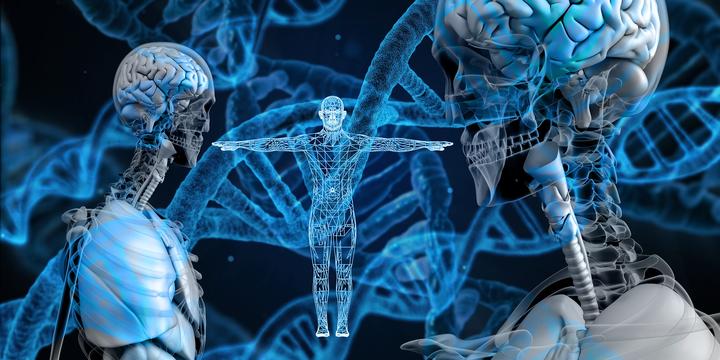Blue copper peptide is a small molecule protein and is the earliest peptide discovered. A compound composed of Glycylhistidinetripeptide (GChemicalbookHK) and copper. It is named blue copper peptide/blue copper peptide because its aqueous solution is blue. It is naturally present in human plasma and urine. Small molecule copper peptide complexes in fluid, saliva, and cerebrospinal fluid.
GHK is a tripeptide first isolated from human plasma in 1973 by Pickart et al. It is described as a growth factor for a variety of differentiated cells and a regulator of extracellular matrix. GHK plasma concentration is significantly related to the regeneration capacity of the organism. Research shows that the plasma concentration of GHK in a 20-year-old young person (200ng/mL, ng: nanogram) is 2.5 times higher than the GHK concentration in a 60-year-old elderly person (80ng/mL). . Later, it was discovered that GHK and divalent copper have a high affinity and can spontaneously combine with them to form the complex GHK-Cu. Further research found that its polypeptide (tripeptide-1) composed of glycyl-L-histidyl-L-lysine combined with copper ions to form a complex structure. It has a copper ion as the center and is surrounded by three amino acid molecules. This complex is soluble in water, and the pH value of a 1% aqueous solution is about 6.5.
Copper peptides can be said to be the ancestor of peptides. In the 1970s, American Dr. Loren Pickart discovered that copper peptides are very effective in treating wounds and skin injuries. They can not only reduce the formation of scar tissue, but also stimulate the skin to heal itself. . In terms of wrinkle removal, copper peptides can minimize daily skin damage and delay aging.
Copper is a trace element required to maintain body functions (daily requirement: 2 mg). It has many and complex functions and is an element required for the action of various cellular enzymes. In terms of its role in skin tissue, it has the functions of antioxidant, promoting collagen proliferation, and assisting in wound healing. Scientists have discovered that the anti-wrinkle effect of copper molecules is mainly through the carrier of amino acid complexes (peptides), allowing divalent copper ions with biochemical effects to enter cells and exert physiological functions. Copper-bonded amino acid GHK-CU is a complex composed of three amino acids and one copper ion discovered by scientists in serum. This blue copper peptide can effectively promote collagen and elasticity. The production of proteins increases blood vessel growth and antioxidant capacity, and stimulates the production of glycopolyamines (GAGs), helping the skin restore its natural ability to repair itself. The discovery and purification of Copper Peptide Complex™ has become Neova’s exclusive global patent. Using this breakthrough GHK-CU can increase the vitality of cells without hurting or irritating the skin, gradually repairing the lost collagen in the body, making the subcutaneous tissue strong, and the wound can be healed quickly, thereby achieving wrinkle removal and anti-aging. the goal of. The composition of GHK-Cu is: glycine-histidyl-L-lysine-copper (glycyl-L-histidyl-L-lysine-copper). The copper ion Cu2+ is not the yellow color of copper metal, but appears blue in aqueous solution. , so GHK-Cu is also called blue copper peptide.
The Funtion of Blue copper peptide
(1) Anti-aging blue copper peptide has multiple functions, including messenger and transport functions. Blue copper peptide is believed to stimulate the metabolism of skin cells and promote the synthesis of collagen and elastin, two proteins that are key components in maintaining skin elasticity and firmness.

Therefore, blue copper peptides help reduce the appearance of wrinkles and fine lines. After blue copper peptide enters the skin, it releases signals to induce fibroblasts to produce collagen and promote collagen production. In addition, blue copper peptides can carry copper ions into cells and release copper ions when encountering enzymes. Copper ions are a very important component in many enzymatic reactions. Blue copper peptide can promote the production of proteoglycans (GAGs), which are important components of the extracellular matrix, making the skin plump, moist, and elastic. If there is insufficient proteoglycan, the skin will become loose, aging, dry and rough. The core function of the famous anti-aging ingredient Bosein is to promote proteoglycan synthesis.
(2) Promote wound healing and repair damaged skin. Blue copper peptide has been found to promote the natural healing process of the skin, accelerate wound closure and skin regeneration, and repair damaged skin. It also reduces skin inflammation and can help soothe sensitive and acne-prone skin.
(3) The antioxidant effect of antioxidant blue copper peptide has been confirmed in in vitro experiments and animal experiments. It can block the formation of reactive oxygen species, scavenge various peroxides, and protect keratinocytes from ultraviolet damage, and Block free radical damage to the liver and protect the liver. The excellent antioxidant effect of blue copper peptide can brighten skin tone, refine skin and prevent skin aging.
The COA of Blue copper peptide









